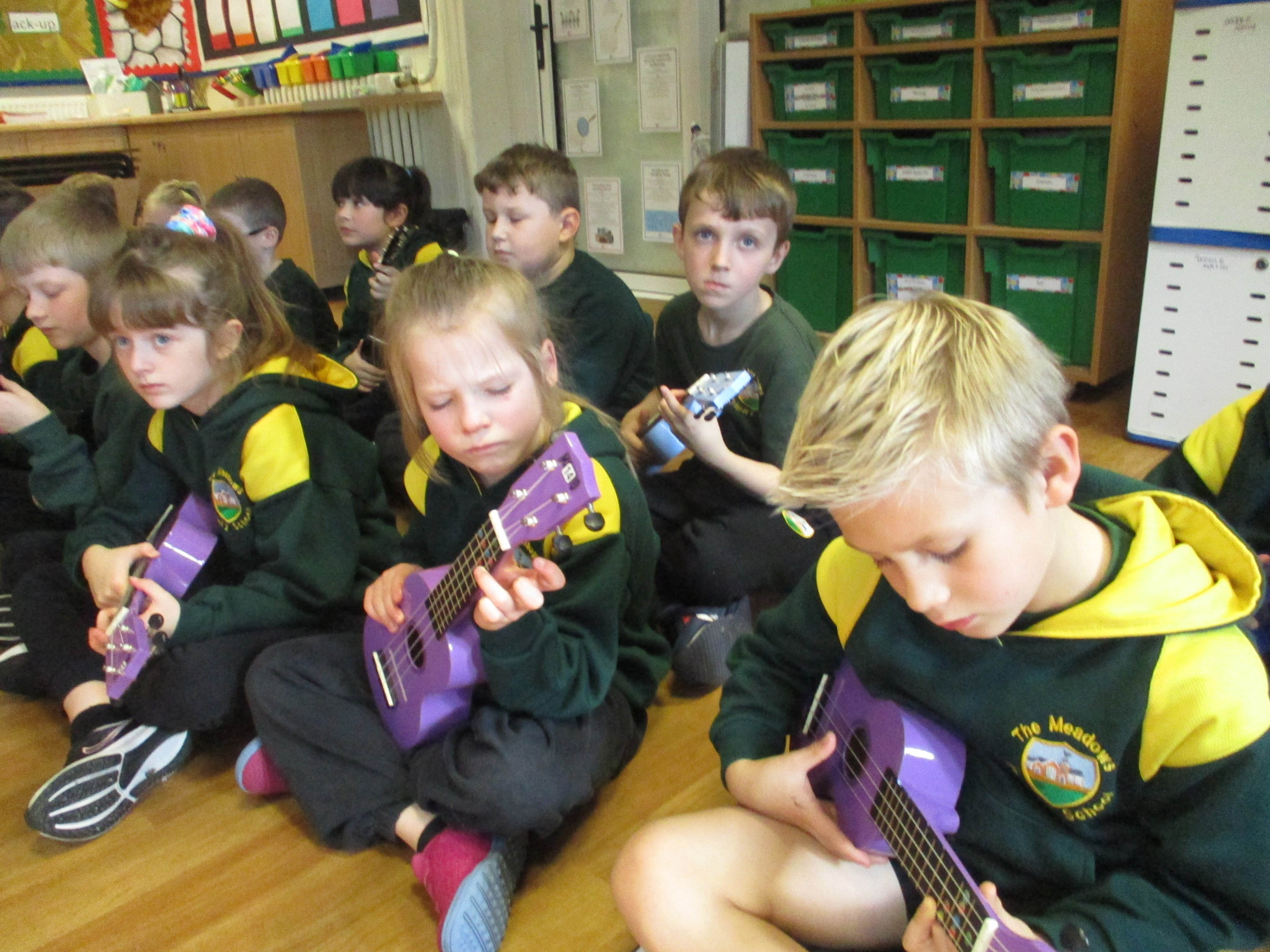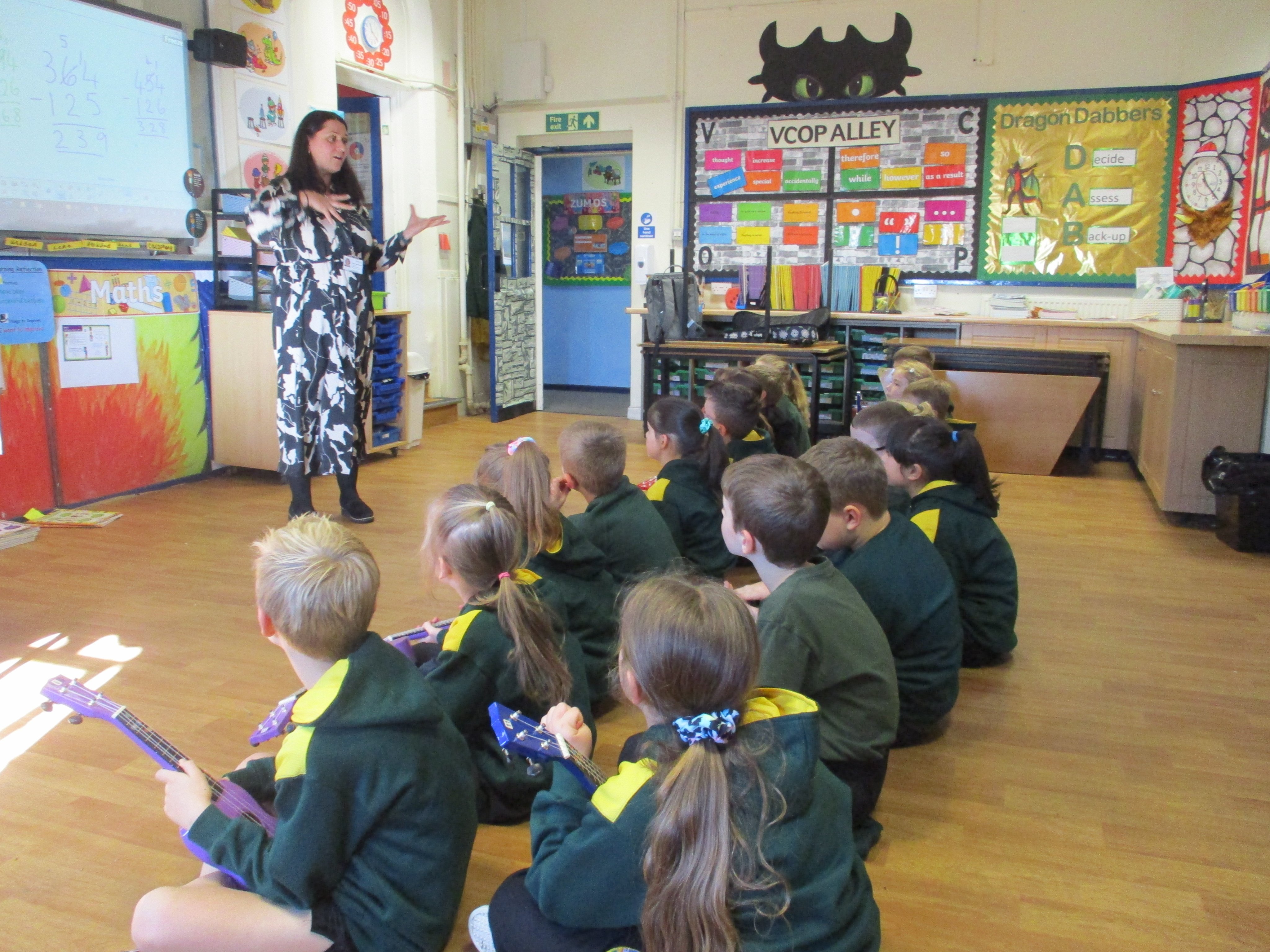Curriculum Intent: Music

Our Curriculum Drivers

Characteristics of a Musician
- A rapidly widening repertoire which they use to create original, imaginative, fluent and distinctive composing and performance work.
- A musical understanding underpinned by high levels of aural perception, internalisation and knowledge of music, including high or rapidly developing levels of technical expertise.
- Very good awareness and appreciation of different musical traditions and genres.
- An excellent understanding of how musical provenance - the historical, social and cultural origins of music - contributes to the diversity of musical styles.
- The ability to give precise written and verbal explanations, using musical terminology effectively, accurately and appropriately.
- A passion for and commitment to a diverse range of musical activities.
Implementation
Our pupils should be able to organise their knowledge, skills and understanding around the following learning hooks:
- To perform
- To compose
- To transcribe
- To describe music
These key concepts or as we like to explain them to children – learning hooks, underpin learning in each milestone. This enables pupils to reinforce and build upon prior learning, make connections and develop subject specific language.
The vertical accumulation of knowledge and skills from Years 1 to 6 is mapped as follows:
|
Threshold Concept Key Skills |
Milestone 1 Years 1 and 2 |
Milestone 2 Years 3 and 4 |
Milestone 3 Years 5 and 6 |
|
Perform |
• Take part in singing, accurately following the melody. • Follow instructions on how and when to sing or play an instrument. • Make and control long and short sounds, using voice and instruments. • Imitate changes in pitch. |
• Sing from memory with accurate pitch. • Sing in tune. • Maintain a simple part within a group. • Pronounce words within a song clearly. • Show control of voice. • Play notes on an instrument with care so that they are clear. • Perform with control and awareness of others. |
• Sing or play from memory with confidence. • Perform solos or as part of an ensemble. • Sing or play expressively and in tune. • Hold a part within a round. • Sing a harmony part confidently and accurately. • Sustain a drone or a melodic ostinato to accompany singing. • Perform with controlled breathing (voice) and skillful playing (instrument). |
|
Compose |
• Create a sequence of long and short sounds. • Clap rhythms. • Create a mixture of different sounds (long and short, loud and quiet, high and low). • Choose sounds to create an effect. • Sequence sounds to create an overall effect. • Create short, musical patterns. • Create short, rhythmic phrases. |
• Compose and perform melodic songs. • Use sound to create abstract effects. • Create repeated patterns with a range of instruments. • Create accompaniments for tunes. • Use drones as accompaniments. • Choose, order, combine and control sounds to create an effect. • Use digital technologies to compose pieces of music. |
• Create songs with verses and a chorus. • Create rhythmic patterns with an awareness of timbre and duration. • Combine a variety of musical devices, including melody, rhythm and chords. • Thoughtfully select elements for a piece in order to gain a defined effect. • Use drones and melodic ostinati (based on the pentatonic scale). • Convey the relationship between the lyrics and the melody. • Use digital technologies to compose, edit and refine pieces of music. |
|
Transcribe |
• Use symbols to represent a composition and use them to help with a performance. |
• Devise non-standard symbols to indicate when to play and rest. • Recognise the notes EGBDF and FACE on the musical stave. • Recognise the symbols for a minim, crotchet and semibreve and say how many beats they represent. |
• Use the standard musical notation of crotchet, minim and semibreve to indicate how many beats to play. • Read and create notes on the musical stave. • Understand the purpose of the treble and bass clefs and use them in transcribing compositions. • Understand and use the # (sharp) and ♭ (flat) symbols. • Use and understand simple time signatures. |
|
Describe music |
• Identify the beat of a tune. • Recognise changes in timbre, dynamics and pitch. |
• Use the terms: duration, timbre, pitch, beat, tempo, texture and use of silence to describe music. • Evaluate music using musical vocabulary to identify areas of likes and dislikes. • Understand layers of sounds and discuss their effect on mood and feelings. |
• Choose from a wide range of musical vocabulary to accurately describe and appraise music including: • pitch • dynamics • tempo • timbre • texture • lyrics and melody • sense of occasion • expressive • solo • rounds • harmonies • accompaniments • drones • cyclic patterns • combination of musical elements • cultural context. • Describe how lyrics often reflect the cultural context of music and have social meaning. |
Aspirations For The Future
Pupils develop an understanding of how subjects and specific skills are linked to future jobs.
Here are some of the jobs you could aspire to do in the future as a Musician:
- Theatre performer
- Songwriter
- Casting director
- RAF Musician
- Performer
For more careers, please visit First Careers.
Impact
Assessment
Through the explicit teaching of the Music skills, both the teachers and the pupils assess their learning continuously throughout the lesson. Our assessment systems enable teachers to make informed judgements about the depth of their learning and the progress they have made over time.
Pupil Voice
Here is what Music looks like at The Meadows:

Disclaimer: This has been developed with reflection upon the National Curriculum (2014) and Chris Quigley’s Essential Curriculum.

